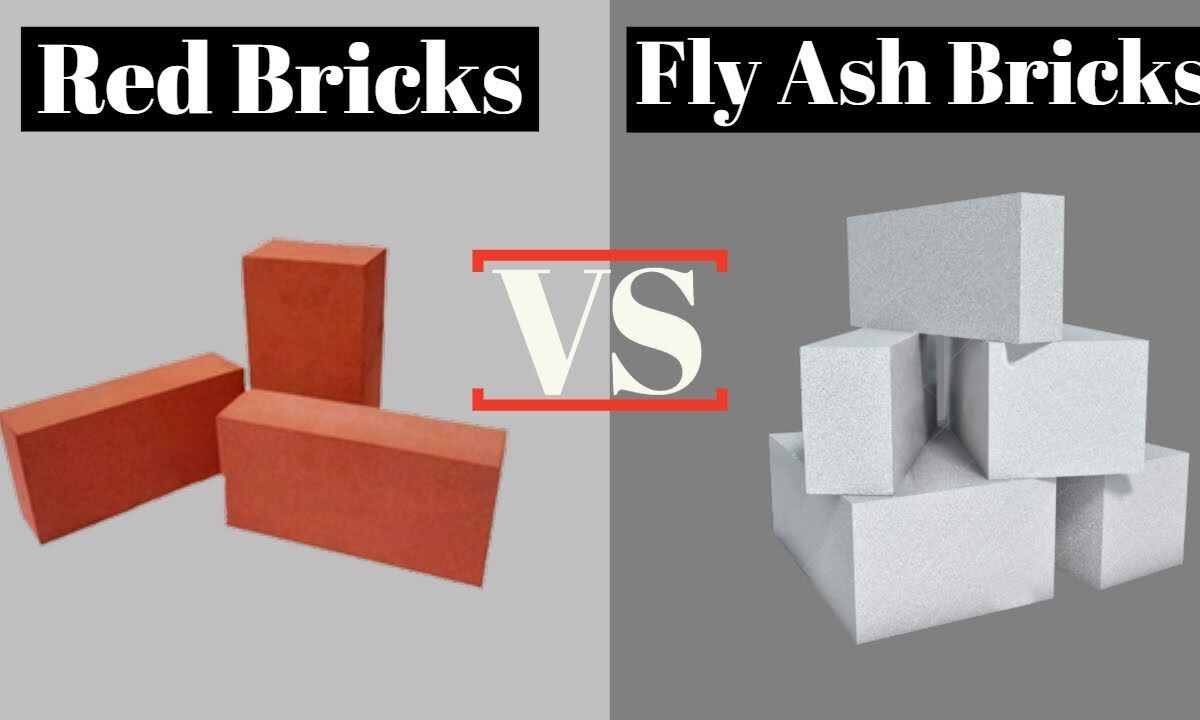The construction industry continually seeks materials that balance sustainability, strength, and cost-effectiveness. Two primary contenders in this domain are fly ash bricks vs red bricks. These fundamental building blocks serve as the backbone of numerous constructions, but their differences warrant careful consideration before choosing the ideal option.
Introduction to Fly Ash Bricks vs Red Bricks
Fly Ash bricks, composed primarily of fly ash—a byproduct of burning coal—and other materials, have gained traction for their eco-friendly nature. Conversely, red bricks, made from clay and often burnt in kilns, have been the traditional choice for construction purposes for centuries.
Environmental Impact
Comparing the environmental impact of these bricks reveals a stark contrast. Fly ash bricks, incorporating waste materials like fly ash, exhibit lower carbon emissions during production compared to the energy-intensive process of manufacturing red bricks, thereby positioning them as a greener alternative.
Fly Ash Bricks vs Red Bricks: Strength and Durability
When it comes to strength and durability, both types have their merits. Red bricks, known for their robustness, have been extensively used in construction. However, fly ash bricks boast commendable strength and are often considered more resilient against weathering and erosion over time.
Cost Comparison
At first glance, red bricks might seem more cost-effective due to their widespread availability. However, a deeper analysis considering initial costs, long-term expenses, and durability could reveal surprising insights into the cost-effectiveness of fly ash bricks.
Construction Efficiency
The ease of handling and installing fly ash bricks compared to red bricks can significantly impact construction timelines. Fly ash bricks, being lighter and more uniform, can potentially expedite the building process.
Aesthetics and Finishing
While red bricks hold a classic appeal with their distinct reddish hue, fly ash bricks are available in various shades and can be finished in multiple ways, providing versatility in architectural design.
Insulation and Thermal Properties
The insulating capabilities and thermal conductivity of both types play a crucial role in maintaining indoor temperatures. Understanding these properties aids in selecting the right material based on climatic conditions.
Availability and Accessibility
Considering the distribution and availability of these bricks is vital, especially in regional contexts. Accessibility can determine the feasibility of using either fly ash or red bricks in construction projects.
Regulatory Compliance
Adhering to building codes and regulations is imperative. Evaluating whether fly ash or red bricks align better with local regulations ensures a smooth construction process without legal hurdles.
Maintenance and Repairs
Understanding the maintenance requirements and repairability of these bricks helps project planners foresee long-term costs and maintenance efforts.
Case Studies and Real-Life Applications
Exploring successful projects and real-life applications utilizing fly ash and red bricks provides practical insights into their effectiveness and reliability.
Popular Opinion and Industry Trends
Insights from industry experts and user feedback shed light on prevalent trends and preferences, guiding decisions towards the most suitable option.
Environmental Policies and Impact
Government initiatives supporting eco-friendly materials contribute to the larger narrative of reducing carbon footprints, making a compelling case for the use of fly ash bricks.
Recommendations and Conclusion
Considering the multitude of factors—environmental impact, cost, strength, aesthetics, and more—the choice between fly ash bricks and red bricks ultimately depends on specific project requirements. Evaluating these aspects holistically can lead to informed decisions, fostering sustainable and efficient construction practices.
FAQs
Q. Are fly ash bricks stronger than red bricks?
A. Fly ash bricks possess commendable strength and resilience comparable to red bricks.
Q. Which type of brick is more environmentally friendly?
A. Fly ash bricks exhibit lower carbon emissions, making them a greener choice.
Q. Are red bricks more cost-effective than fly ash bricks?
A. While red bricks might seem cheaper initially, considering long-term expenses could reveal cost-effectiveness in using fly ash bricks.
Q. Do fly ash bricks require special handling during construction?
A. Fly ash bricks are lighter and more uniform, potentially expediting the construction process.
Q. Are fly ash bricks widely available?
A. Accessibility of fly ash bricks may vary regionally, warranting consideration based on project location.







